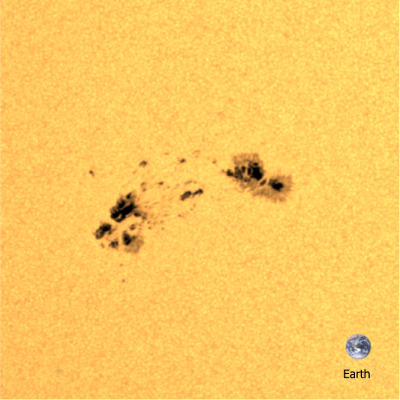Understanding longevity: From gene sequences to social inequity
03 April 2025
Published online 17 July 2016
Fiery, loop-shaped magnetic fields rise from the Sun’s interior at a slower speed than previously predicted.

© Max Planck Institute for Solar System Research.
Astrophysicist Aaron Birch from Germany’s Max Planck Institute for Solar System Research and colleagues in Germany, the United States and the United Arab Emirates, developed a new approach to analyse the Sun’s tubular magnetic fields, called magnetic flux tubes, and found they rose at a speed no greater than 150 meters per second (m s−1) at a depth of 20,000 km, well below previous predictions of 500 m s−1.
When the sun’s plasma — one of the four fundamental states of matter — is set in motion in the solar interior, a magnetic field concentration may form, rising to the surface and creating a pair of sunspots. The details of this process are still poorly understood.
The sun’s magnetic fields are involved in all aspects of solar activity, including in solar flares, which are brief eruptions of high-energy radiation from the Sun’s surface, and coronal mass ejections, powerful eruptions of plasma from the Sun into space.
The team’s unique approach involved comparing results of observations from NASA’s Helioseismic and Magnetic Imager with previously unfeasible numerical simulations of the upper layers of the Sun.
“The rapid growth in computer power in the past few years has made it possible to carry out simulations of the size needed to address the rise of magnetic flux concentrations below the solar surface and to make direct comparisons with observations,” says astrophysicist and study co-author Laurent Gizon from New York University Abu Dhabi’s Center for Space Science.
doi:10.1038/nmiddleeast.2016.108
Stay connected: